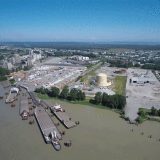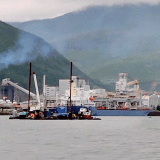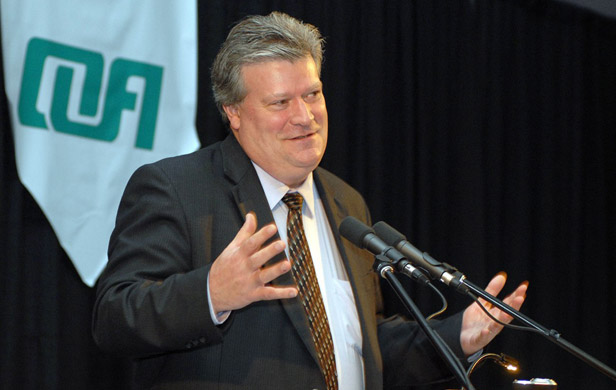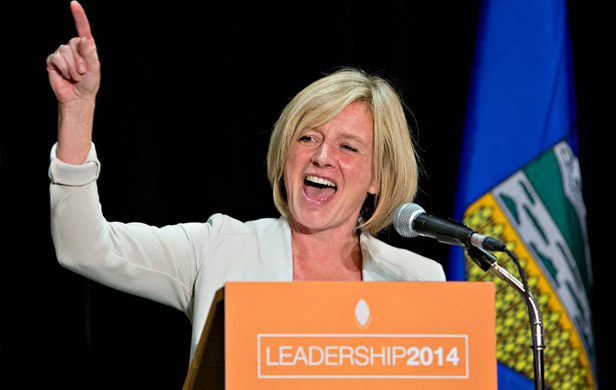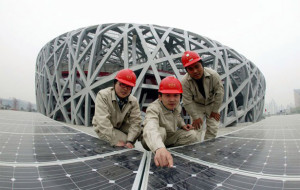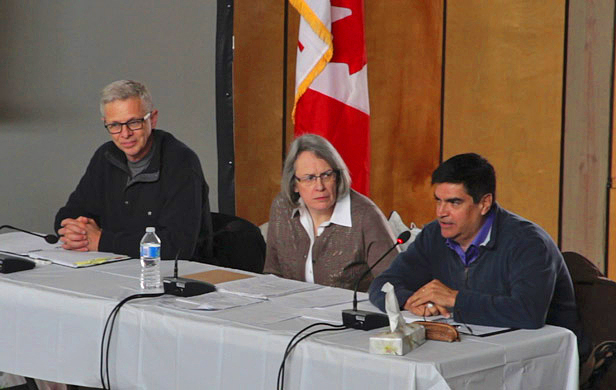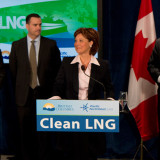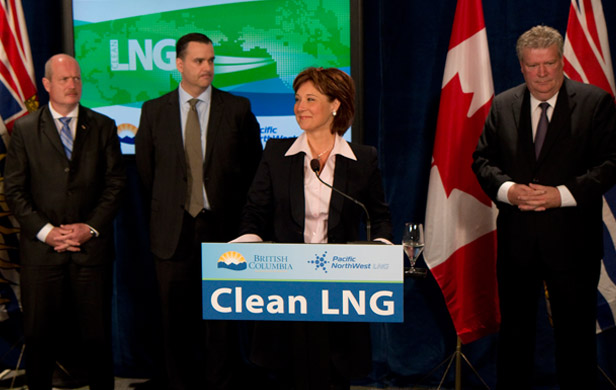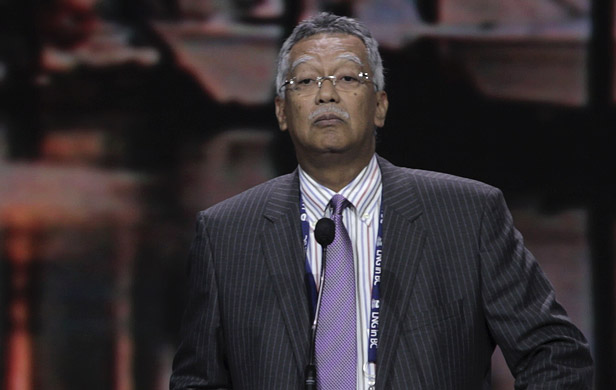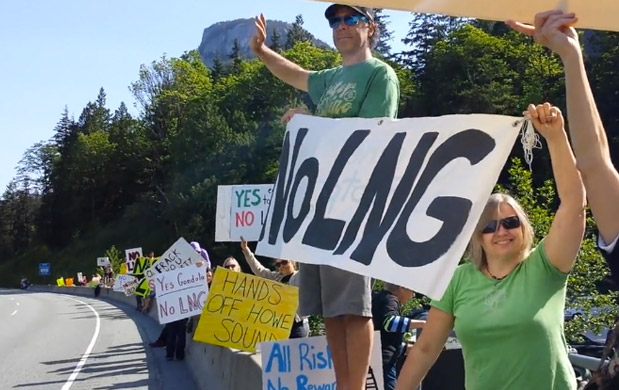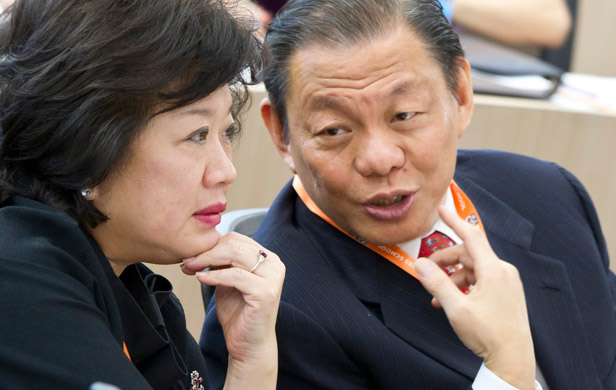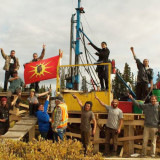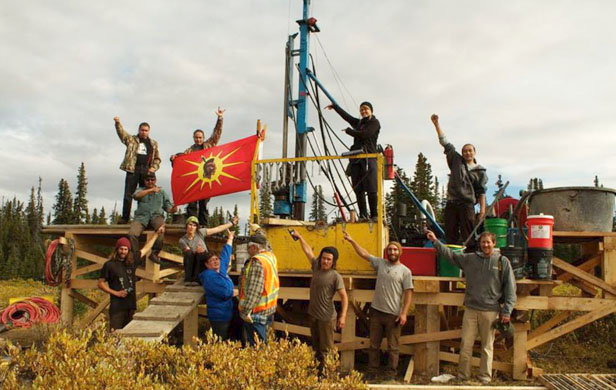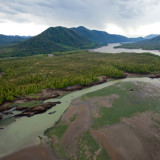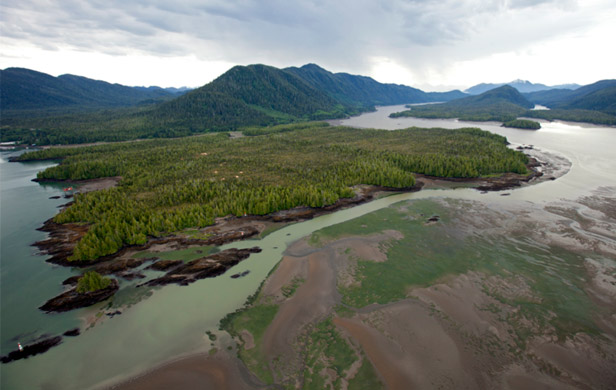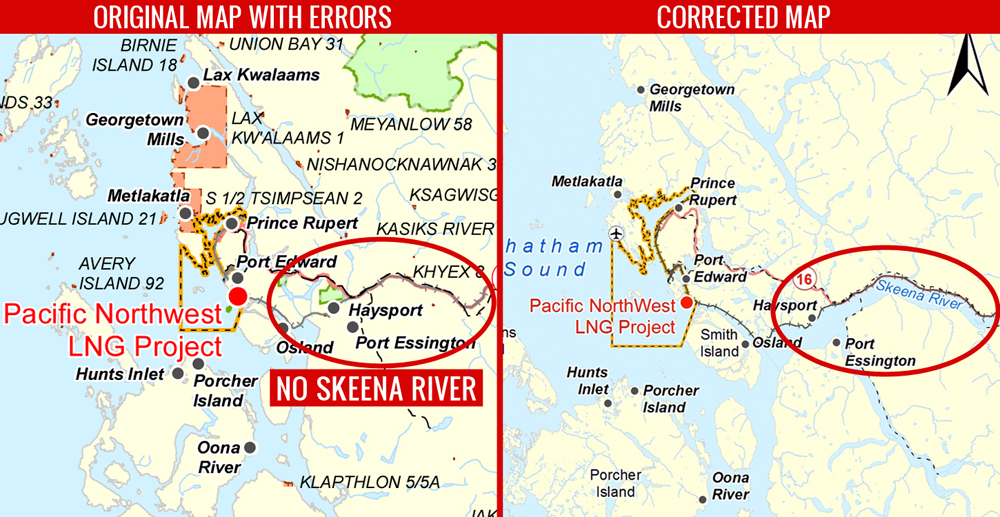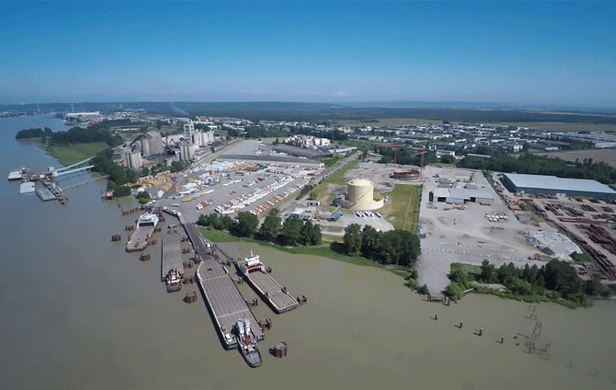
The following is republished with permission from The ECOReport.
by Roy Hales
UPDATE: Following complaints that the CEAA email system for public comments on the project has been out of commission throughout the 20-day comment period, the window for feedback has been extended until June 24
The National Energy Board has already granted an export license, to US based WesPac Midstream, for a facility that could bring up to 120 LNG tankers and 90 LNG barges into the Fraser River every year. The public’s opportunity to make their concerns known ends June 11. There are only eight days to comment on Delta’s proposed LNG terminal (WesPack Tilbury Marine Jetty).
Thought it was a joke
Voters Taking Action On Climate Change (VTACC) sent out an alert after seeing a notice about the proposed LNG facility on the British Columbia’s Environmental Assessment Office’s (BC EAO) website.
The first notice MLA Andrew Weaver, of BC’s Green party, received was an email from the ECOreport, “I thought it was a joke, a spoof on LNG. It is remarkable that this is potentially going ahead. The Tilbury facility is there already to provide natural gas at peak times in the Lower Mainland, or there are little communities here or there that need natural gas.
He added:
[quote]But the proposal to have up to 120 LNG tankers and 90 LNG barges a year is just truly remarkable. What has it come to that we are starting to see these massive fossil fuel projects being brought forward with days to have any input on? I’m an MLA in the province of British Columbia. I read a lot. I’m pretty much up on what is going on in the province and I have eight days notice )about the WesPack Tilbury project) because you emailed me about it![/quote]
The ECOreport also attempted to contact the provincial NDP critic for natural gas development, who was not available to comment.
CEAA “sent out a press release”
A spokesperson from the Canadian Environmental Assessment Agency (CEAA) said they sent out a news release on May 22. She said there will not be another opportunity for the public to comment unless the CEAA decides an environmental assessment is necessary.
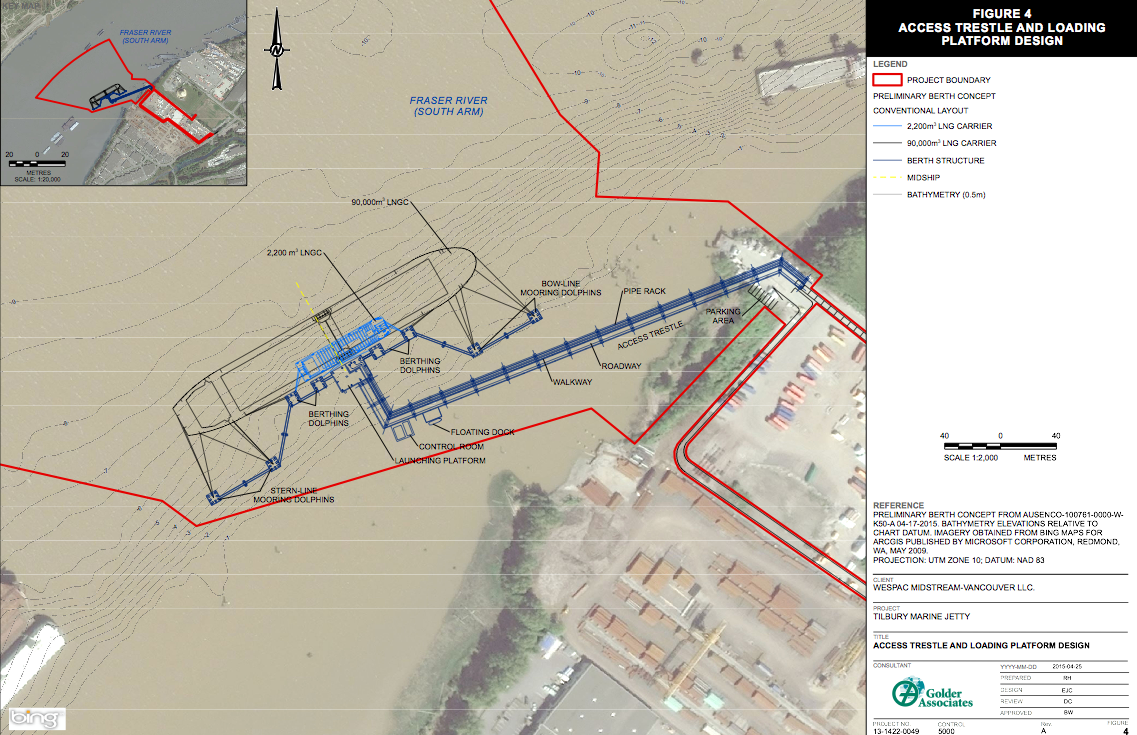
In the CEAA project description, it says “WesPac is committed to ongoing consultation and engagement with Aboriginal groups that are interested in the Project.” Both the Musqueam and Tsawwassen have signed agreements and WesPac is in discussions with several other First Nations. They also provided a list of First Nations that have no yet responded to their queries:
- Hwlitsum;
- Lake Cowichan;
- Lyackson;
- Semiahmoo;
- Squamish;
- Seabird Island First Nation;
- Shxw’ow’hamel First Nation;
- Skawahlook;
- Soowahlie First Nation;
- Stó:lō Nation;
- Stó:lō Tribal Council;
- and Tsawout First Nation.
BC’s existing LNG facilities
BC has two existing LNG facilities, both owned by FortisBC. Tilbury LNG Facility, next to the proposed WesPack site, is 43 years old. Fortis began a $400 million expansion project last October. This adds 1.1 million gigajoules of liquefied natural gas (LNG) to storage and 34,000 gigajoules per day of liquefaction capacity. Another LNG facility opened near Ladysmith in 2011.
WesPac aims to start construction next year
Premier Christy Clark’s government appears to endorse this project. A notice on their website proclaims, “The WesPac LNG marine terminal will provide a means of loading LNG onto carrier ships for export.” BC’s Environmental Assessment Office has requested that it be allowed tosubstitute a provincial revue for the federal process.
WesPack expects to start construction of its’ terminal next year. It will take 15 months to build the WesPack Tilbury Marine Jetty and they expect it to be operational for at least 30 years.
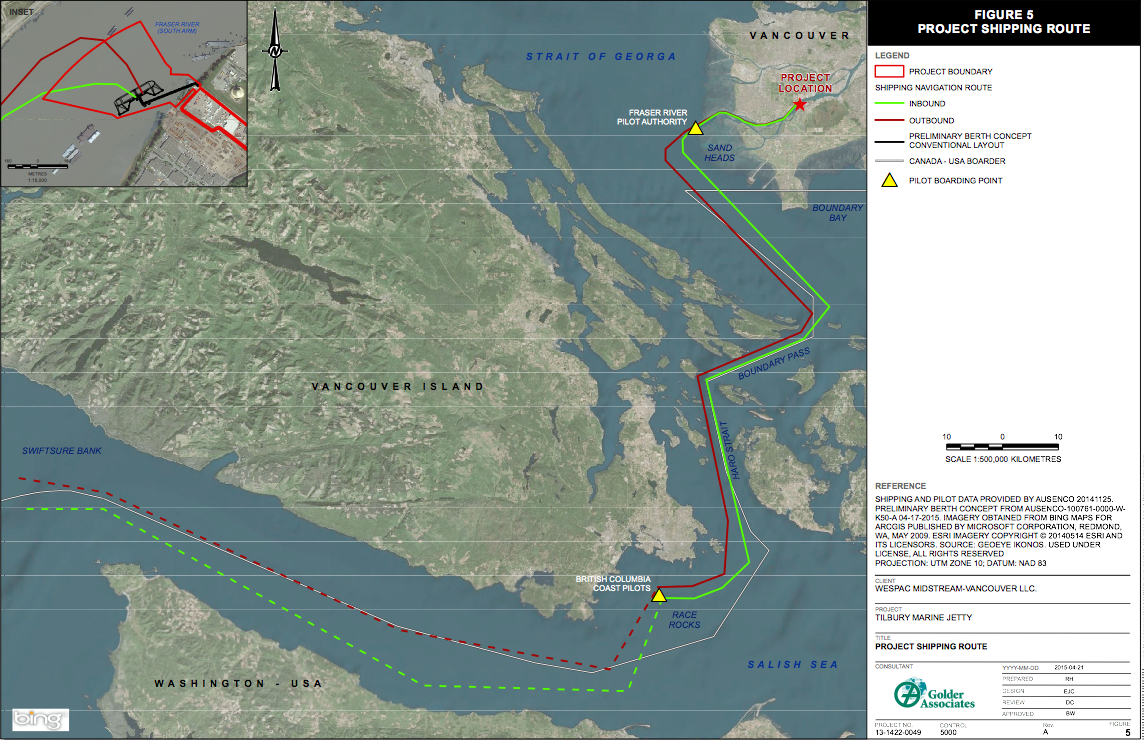
One of the proposed domestic customers is BC ferries, which has ordered three LNG fueled ferries that can accommodate 145 vehicles and 600 passengers.
Weaver said, “BC ferries has suggested is it will provide with the new ships to LNG power instead of diesel. It is cleaner, it is a domestic market for a domestic product. I’m totally for that, but you just need a small capacity for that. If Fortis and others would come to people and say, ‘look BC ferries wants to start using LNG. We need to provide a fueling station for it and this is how we propose to do it.’ You could build a social license from a project like that.””
Barges of up 4,000 m of LNG capacity will service coastal communities through-out the regional market.
Much larger LNG carriers, meant for foreign markets, have up to 90,000 m of capacity. They can tie up at the Marine Jetty for up to eight days, but will normally depart after 24 to 48 hours.
LNG terminal absurd
Kevin Washbrook, director with VTACC, thinks it is absurd to build an LNG terminal on the Fraser River.
“I think once enough people become aware the push-back will be so high, and the assessment so rigorous, that it will be easy to say this makes no sense. Just on the siting of the review process and the lack of a proper assessment of the location, I think there are reasons for everyone to be concerned about this project. Even LNG supporters accept that you have to be careful about where you put these things,” he said.
Weaver agrees:
[quote]Anybody who claims these days that a major infrastructure , or resource project, is a done deal need not look much further than some of the projects around British Columbia that have run into resistance. Not the least of which is the Enbridge (Northern Gateway) pipeline or the implications of the recent Tsilhqot’in decision with respect to resource projects on First Nations land.[/quote]
Business done respectfully
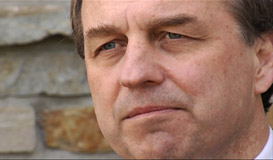
Weaver insists, “British Columbians are fed up with being treated disrespectfully, things being ramrodded down their throats in terms of a top down push to governance.”
This is not a lesson the Canadian or British Columbian governments appear to have learned.
“Is British Columbia open for business? Absolutely, but business done respectfully – not irresponsibly like we are seeing here, with little attempt to actually engage the public. I wonder how many people living along the Fraser River even know about this?” said Weaver.
Matt Horne of the Pembina Institute said, “It is disturbing that a project of this scale could potentially be approved without an environmental assessment. In addition to being a large industrial facility in the Lower Mainland, it would also necessitate an expansion of shale gas wells, roads and pipelines in northeast B.C. It should absolutely go through an environmental assessment process. And while environmental assessments in Canada have serious flaws, conducting one would at least ensure the WesPac proposal undergoes the same scrutiny as other LNG proposals around the province.”
“A loud public response in the next few days is needed to ensure this LNG proposal receives the careful assessments our region deserves,” said Washbrook. “Environment Minister Leona Aglukkaq should commit to a federal panel review for this project, and she should reject BC’s request to substitute a provincial review. Given the BC government’s clear bias in favour of LNG exports, handing this over to the province would be like putting the foxes in charge of the hen house.”
(Click on this link to access a form where you can ask federal Environment Min Aglukkaq to 1) conduct an assessment of this project and 2) reject BC’s request to substitute a provincial assessment instead.)
Top Photo Credit: The Fortis LNG compression station is located at the middle of the photo (beige storage tank). The LNG terminal would be located immediately downstream (to the right) and the vessels would load where the old wooden pilings are in the river – courtesy Eoghan Moriarty | RealHearings.org
